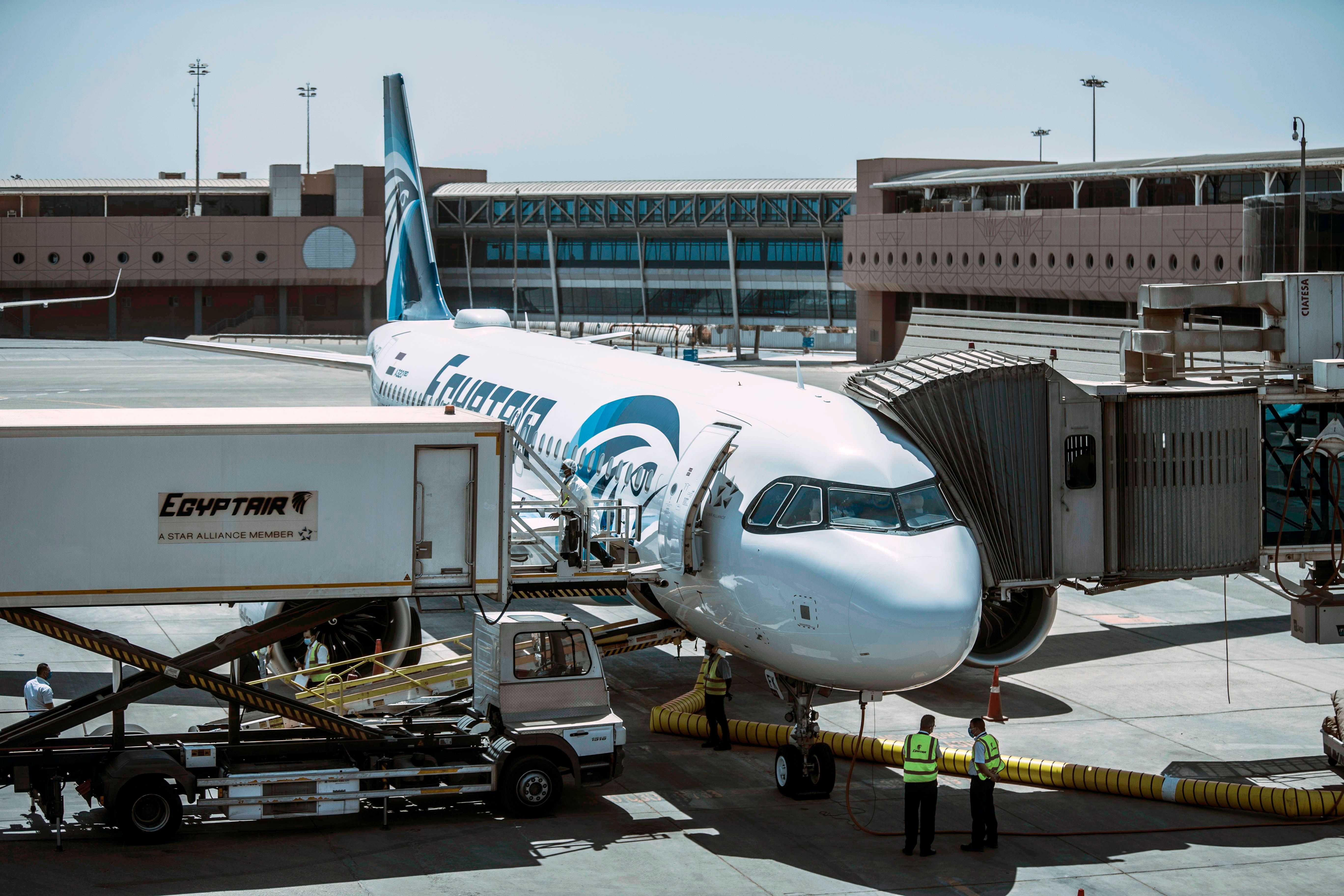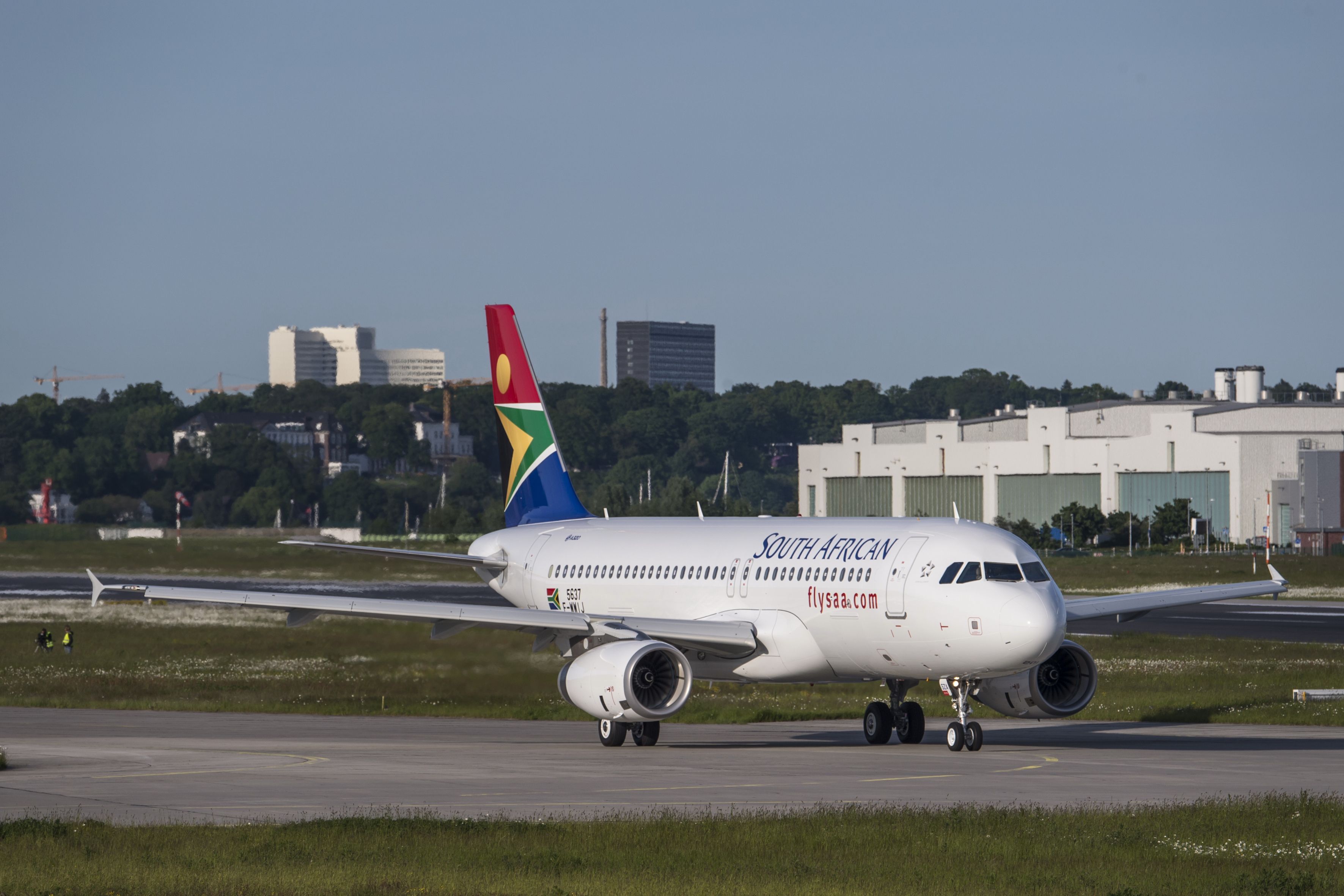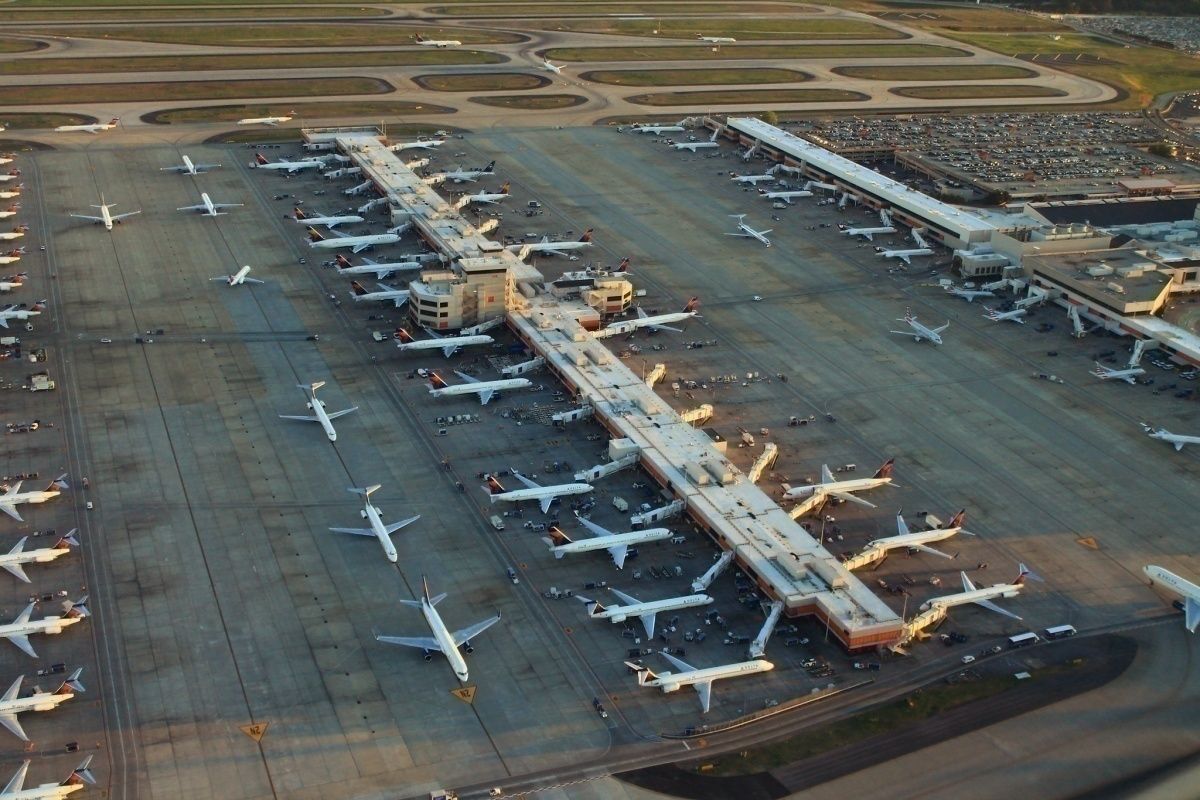Discovering Africa's Busiest Air Hubs: A Look At Active Travel Gateways
When we talk about places that are truly alive with movement, airports often come to mind. They are, in a way, the very pulse of global connection. Thinking about Africa, a continent of vast spaces and growing connections, it makes sense to wonder which of its airports see the most activity. It's almost like a big puzzle, you know, figuring out where all the people and goods are moving through. We are going to explore some of these very active places, where a lot happens every single day, and what makes them so full of life and constant motion.
The idea of "busiest" really means a place engaged in a whole lot of action. It's a place characterized by or sustaining much activity, you might say. My text explains that "busiest" is the superlative form of "busy," describing a state of being more occupied, active, or crowded than others in a given context or comparison. So, when we talk about the busiest African airports, we are really talking about those spots that are more occupied, more active, and certainly more crowded than many others across the continent. They are, in a way, central points for people going places and for things being moved around.
This discussion will take us through what makes an airport truly busy, the impact these hubs have, and, you know, a few of the places that stand out. We will consider what draws so many people and so much cargo to these specific locations. It's a way to understand the flow of travel and commerce across a truly dynamic part of the world. We will also touch on how these airports are changing, and what that means for future journeys and connections.
Table of Contents
- What Makes an Airport Busy?
- Africa's Key Air Gateways
- The Role of Location and Connectivity
- Impact of These Active Hubs
- Looking Ahead for African Airports
- Frequently Asked Questions
What Makes an Airport Busy?
An airport becomes busy, you know, for several reasons. It's not just about the number of planes landing or taking off. A truly busy airport sees a lot of people moving through it, often going to many different places. This is passenger traffic, and it's a big indicator. Then there is cargo, which means goods being flown in and out. Some airports handle a massive amount of cargo, which also adds to their overall activity level. It's like a big machine, you see, with many parts all working together at once.
The connections an airport offers are also a big deal. If an airport has flights to many other cities, both within its own country and around the world, it tends to be busier. These are often called hub airports because they act like central points where people change planes to get to their final destinations. This makes them, in a way, incredibly important for linking up different parts of the globe. So, an airport's network of routes really does play a significant part in its busyness, you know.
Economic activity around the airport also plays a role. A city or region with a strong economy will naturally generate more travel, both for business and for pleasure. This means more people flying in and out, and more goods needing to be transported by air. It's a bit like a magnet, drawing in more activity because of what's happening nearby. So, a busy airport often reflects a busy economy in its surrounding area, which is pretty interesting when you think about it.
Africa's Key Air Gateways
Africa has several airports that stand out for their level of activity. These places are vital for both local and international travel. They serve as key points for people visiting, for trade, and for linking communities across vast distances. It's a very dynamic picture, with some airports consistently seeing a lot of action year after year. They are, in some respects, the very arteries of air travel for the continent, you could say.
O.R. Tambo International, Johannesburg
O.R. Tambo International Airport in Johannesburg, South Africa, is often mentioned as one of the continent's most active. It acts as a major gateway for southern Africa. People flying into South Africa often arrive here first, and many then connect to other places. It handles a lot of flights, both for people traveling and for cargo. This airport is, you know, a very important connection point for the whole region, really.
Its location makes it a natural hub for travel within South Africa and to other countries in the southern part of the continent. It also sees many long-haul flights from Europe, Asia, and the Americas. The amount of activity here is quite something, with planes coming and going at all hours. It's a place that is, more or less, always engaged in action, reflecting its central role in the travel world.
Cairo International, Egypt
Cairo International Airport in Egypt is another airport that sees a lot of movement. Its location in North Africa, acting as a bridge between Africa, the Middle East, and Europe, makes it a very strategic point. It handles a significant number of passengers and a fair bit of cargo too. This airport is, you know, a very important entry point for those visiting Egypt's ancient sites, and for people traveling between continents.
The airport's activity is tied to Egypt's role as a cultural and historical destination, and also its position in the broader region. It's a place where you will see many different airlines, connecting people from all sorts of places. It is, in a way, a very busy crossroads for air traffic. The constant flow of people and planes really does show its importance.
Bole International, Addis Ababa
Bole International Airport in Addis Ababa, Ethiopia, has grown quite a bit in its activity levels. It is the home base for Ethiopian Airlines, which has a very extensive network across Africa and beyond. This airline's growth has, you know, made the airport incredibly busy, acting as a major transit point for travelers crossing the continent. It is, arguably, a very strong example of how a national airline can make its home airport a true powerhouse.
The airport's strategic location in East Africa means it connects many African cities with each other, and also with destinations in Europe, Asia, and the Americas. It's a place that is, typically, full of people making connections, often on long journeys. The sheer volume of flights and passengers passing through here makes it one of Africa's most active places for air travel, as a matter of fact.
Jomo Kenyatta International, Nairobi
Jomo Kenyatta International Airport in Nairobi, Kenya, is a very important hub for East Africa. It serves as a key entry point for tourists visiting Kenya's famous wildlife parks and for business travelers. It also connects many cities within East Africa and beyond. This airport is, in some respects, a very central point for travel in that part of the continent.
Its activity levels reflect Kenya's role in tourism and as an economic center in the region. Many international airlines fly into Nairobi, adding to its busyness. It is, you know, a place that sees a lot of movement, with planes carrying both people and goods to and from various parts of the world. The constant coming and going really does show its significance.
Murtala Muhammed International, Lagos
Murtala Muhammed International Airport in Lagos, Nigeria, is a very active place, reflecting Nigeria's large population and economic activity. It is a key gateway for West Africa, handling a lot of both domestic and international flights. The sheer number of people traveling within Nigeria, and those connecting to other countries, keeps this airport very busy. It is, as a matter of fact, a truly central point for air travel in that part of Africa.
The airport's operations are, quite simply, massive, given the demand for air travel in Nigeria. It sees a wide range of aircraft and airlines, connecting Lagos to destinations all over the world. It is, in a way, a very clear example of how a country's population size and economic drive can make an airport incredibly active. The constant flow of people and planes is really something to see.
Mohammed V International, Casablanca
Mohammed V International Airport in Casablanca, Morocco, is a significant hub for North and West Africa, and a bridge to Europe and the Americas. It is the home base for Royal Air Maroc, which has a wide network of routes. This airport is, you know, a very active place for both passenger and cargo traffic. Its strategic location helps it connect many different regions.
The airport's busyness reflects Morocco's growing tourism industry and its economic ties with Europe and other parts of Africa. It is, in a way, a very important transit point for travelers moving between continents. The constant movement of planes and people here really does show its role as a key gateway for that region, you see.
The Role of Location and Connectivity
The location of these airports is, you know, a huge factor in their busyness. Airports that are centrally located on major flight paths, or those that serve as natural stopping points for long journeys, tend to be more active. Think about it: if you are flying from one continent to another, having a convenient place to change planes makes a big difference. These locations are, in a way, almost naturally positioned for a lot of activity.
Connectivity also means how many different places an airport connects to. An airport with a wide range of direct flights to many cities will naturally attract more travelers. It's like a network, you see, and the more connections it has, the more people will use it. This broad reach makes these airports more useful for both business and leisure travel. So, a strong network is, basically, a very big part of being a busy air hub.
The presence of a strong national airline, as we saw with Ethiopian Airlines, also makes a very big difference. These airlines often use their home airport as a main base, bringing in many flights and passengers. This creates a kind of ripple effect, drawing in more activity and making the airport even busier. It is, you know, a very clear example of how an airline's strategy can greatly impact its home airport's activity levels.
Impact of These Active Hubs
These very active airports have a huge impact on the regions they serve. They are, first off, big drivers of economic growth. They create many jobs, not just at the airport itself, but also in related industries like tourism, logistics, and hospitality. Think about all the hotels, restaurants, and transport services that benefit from a busy airport. It's, like, a very big economic engine, you know.
They also make travel much easier for people. If you can fly directly from your city to many places, it saves time and effort. This improved connectivity helps businesses, allowing them to reach new markets, and it helps people stay connected with family and friends. It is, in a way, a very important part of modern life, allowing for much more movement and interaction.
These airports also play a big part in tourism. They are the first impression many visitors get of a country. A well-run, active airport can make a very positive start to a trip, encouraging more people to visit. They are, you know, truly vital for bringing in visitors who want to explore the continent's many attractions. So, they really do contribute a lot to the travel experience.
Looking Ahead for African Airports
The future for African airports looks, in some respects, very active. Many countries are investing in expanding and modernizing their airport facilities. This is to handle the growing demand for air travel across the continent. It's a clear sign that more and more people are choosing to fly, and that more goods are being transported by air. This trend is, you know, quite significant for the continent's development.
There is also a focus on making these airports more efficient and user-friendly. This means better terminals, faster check-ins, and smoother connections. The aim is to make the travel experience better for everyone passing through. It is, in a way, about preparing for even more activity in the years to come. So, you can expect to see these airports continue to grow and change.
The increasing number of airlines flying to and from Africa, and the expansion of African carriers themselves, also points to a very active future. More routes mean more choices for travelers and more opportunities for trade. It's a very dynamic situation, with new connections being added all the time. The continent's air travel scene is, basically, set to become even more bustling, which is pretty exciting when you think about it.
Frequently Asked Questions
What is the busiest airport in Africa by passenger numbers?
While exact figures change, O.R. Tambo International Airport in Johannesburg, South Africa, is often considered one of the most active airports on the continent when it comes to passenger traffic. It typically handles a very large number of travelers each year, making it a very central point for air travel. It is, you know, a truly significant hub for the region.
What makes an airport busy in Africa?
An airport becomes busy in Africa due to a combination of factors. These include a high volume of passenger travel, significant cargo operations, and its role as a major hub for connecting flights. The economic activity of the surrounding city or country also plays a big part, as does the presence of a strong national airline that uses it as a primary base. It is, in a way, a mix of many different elements coming together.
Are African airports growing?
Yes, African airports are, generally speaking, experiencing growth. There is a noticeable trend of increasing air travel demand across the continent. This has led to investments in expanding and modernizing existing airport facilities and, you know, planning for new ones. This growth is driven by rising populations, economic development, and increased tourism, among other things. It's a very active period for air travel in Africa.
These very active air hubs are, in a way, truly fascinating places to think about. They are points of constant motion, connecting people and goods across vast distances. Understanding what makes them so busy gives us a good sense of the dynamics of travel and commerce on the continent. They are, essentially, vital parts of Africa's ongoing story of connection and growth. To learn more about air travel trends, you can explore our site. You might also find this page interesting: . For general information on global airport operations, you can check out resources like the Airports Council International (ACI) website, which provides a lot of data and insights into airports worldwide.

What Are Africa's Busiest Airports?

What Are Africa's Busiest Airports?

The World's Busiest Airports - How Did They Become So Big?